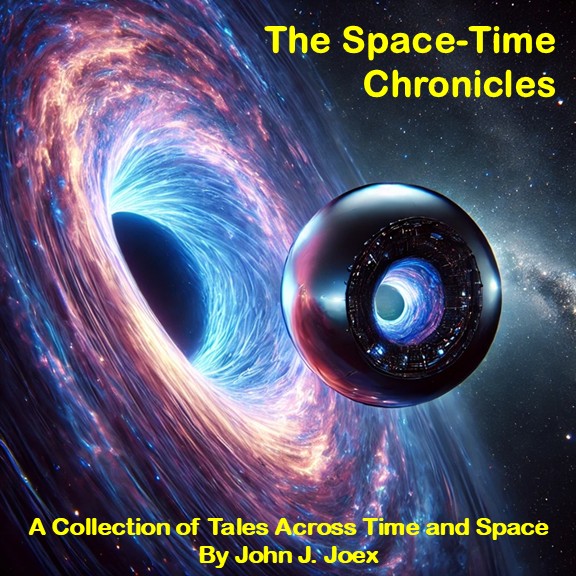 For those who are regular visitors of this site and readers of my Cancellation Watch and Power Rankings columns (and thank your for that), you have heard me go on over the last year or so about how the television landscape is changing and the Nielsens are losing stature as the primary measuring stick for the success of a television show. I have mentioned Social media, streaming/downloads, and international partnerships on a regular basis and I firmly believe that these factors and more will influence a show’s fate in the years to come. Also, for those shows that still get cancelled, there are other venues–particularly the streaming services like Netflix, Amazon, and Hulu–that provide viable suitors to pick them up when dumped by the networks. All of these give us a glimpse of a bright new future that faces episodic television (sci fi and other genres) when the tyranny of the Nielsens will finally be toppled.
For those who are regular visitors of this site and readers of my Cancellation Watch and Power Rankings columns (and thank your for that), you have heard me go on over the last year or so about how the television landscape is changing and the Nielsens are losing stature as the primary measuring stick for the success of a television show. I have mentioned Social media, streaming/downloads, and international partnerships on a regular basis and I firmly believe that these factors and more will influence a show’s fate in the years to come. Also, for those shows that still get cancelled, there are other venues–particularly the streaming services like Netflix, Amazon, and Hulu–that provide viable suitors to pick them up when dumped by the networks. All of these give us a glimpse of a bright new future that faces episodic television (sci fi and other genres) when the tyranny of the Nielsens will finally be toppled.
The only thing . . . that future is not quite upon us yet.
While I believe that social media will become increasingly more important as a means of gauging a show’s audience and I believe that Netflix and Amazon (and possibly other alternatives like pre-funding) will successfully save cancelled shows (some, not all of them), the fact is that we haven’t seen much evidence of it just yet. Oh, there’s some hints that change is in the air, and I will be looking at that further in an upcoming post. But if you look back at several of the cancellations from last season, you will find that the old, ratings-driven model is still firmly in place (as well as poor decision-making by the networks). And those streaming services and upstart cable/internet channels have not been so quick to come in and save these doomed shows.
So with the viable options available, why is the change not happening as quickly as we think it should? One reason is that the entertainment industry–like any well entrenched industry–is slow to change. Network executives are most comfortable using the overnight ratings as their measuring stick because that’s what they have done for many years. And the sponsors–whose advertising revenue pays the production costs of these shows–continue to accept those figures even though more data has become available of late. But even as we get numbers on things like social media activity related to a show, that frontier has not been monetized yet (trust me, they are working fast and furious on it) so at this point it offers a few more stats on the PowerPoint slide (just like DVR viewing), but no money to the bottom line.
So where does that leave us? Still in the same rut as before with the Nielsen overnight ratings primarily focused on the 18-49 demographic driving the decision-making of the network executives.
And why hasn’t Netflix or Amazon saved any of the shows that came out on the wrong end of those ratings (to be fair, Yahoo did save Community after its cancellation last season)? One reason may be cost. The broadcast network shows tend to be pretty pricey and the streaming services may not be willing to ante up that much dough or they may not have enough room in their budgets with all the other original programming they are currently working on. And you can also blame Hollywood’s short attention span. If a show doesn’t succeed right away, then they lose interest pretty quickly and decide to move on to the next thing. They figure it’s pointless to throw money at a “failure” when the next big hit might be about to walk through the door (and in doing so they ignore the millions upon millions they waste each year by not showing a little patience).
I hear plenty of people tell me–especially those within the industry–that the overnight ratings alone do not determine the success or failure of a show. They cite many of the new metrics I have mentioned above and more. And yet I still see little evidence to suggest that those overnights are not the single biggest set of numbers that drive the decisions of the network execs. Here are several examples from last season:
Almost Human (Cancelled by FOX after one season): This show gives the classic example of network bungling and poor decision-making. It was hampered by poor scheduling (a late Fall debut, frequent preemptions, episodes aired out of order), yet it still did relatively well despite the hurdles and showed signs of growing its audience in early 2014 before the preemptions killed its momentum. And its average rating based on the overnights in the 18-49 demo were not that bad when compared to the rest of FOX’s shows for the season. But its numbers were not that great either–especially when they appeared on that PowerPoint slide in the boardroom–and so FOX cancelled it. I would have thought that any of a number of other channels (even the broadcast nets) as well as the streaming services would have immediately raised their hands to pick up the show. And I even heard rumors to that effect early on. But it is just as cancelled now as it was at the end of last season and I do not see any momentum towards continuing this one for another season.
 Star-Crossed (Cancelled by The CW after one season): The fifth place network is typically kinder with its shows, but seemed to have given up on this one before it began. They scheduled it as the lead-in for Mondays which have been a disaster for them for several years. It bowed to poor ratings as expected, though it at least held onto the small audience it attracted. It also developed a vocal fanbase who were (and still are) very active on the social networks. But the network chose to cancel it after its short, thirteen episode run even though its numbers were no worse than Beauty and the Beast which was renewed (a move that still has many of us saying wtf?!). Still, with the active fan support on the net and the fact that this was likely a less expensive production (The CW works on the cheap), you would have thought that Netflix, Amazon, or one of the cable channels might have shown an interest in picking it up. But nothing. The fans are still campaigning today, but I’ve seen no interest in a pickup just yet. And much of the same as Star-Crossed could also be said about The CW’s other cancelled genre show The Tomorrow People, but that one is still firmly cancelled as well.
Star-Crossed (Cancelled by The CW after one season): The fifth place network is typically kinder with its shows, but seemed to have given up on this one before it began. They scheduled it as the lead-in for Mondays which have been a disaster for them for several years. It bowed to poor ratings as expected, though it at least held onto the small audience it attracted. It also developed a vocal fanbase who were (and still are) very active on the social networks. But the network chose to cancel it after its short, thirteen episode run even though its numbers were no worse than Beauty and the Beast which was renewed (a move that still has many of us saying wtf?!). Still, with the active fan support on the net and the fact that this was likely a less expensive production (The CW works on the cheap), you would have thought that Netflix, Amazon, or one of the cable channels might have shown an interest in picking it up. But nothing. The fans are still campaigning today, but I’ve seen no interest in a pickup just yet. And much of the same as Star-Crossed could also be said about The CW’s other cancelled genre show The Tomorrow People, but that one is still firmly cancelled as well.
Dracula (Cancelled by NBC after one season): This was billed as a limited-run “event” series, but that was a bait-and-switch as it was built to run for multiple seasons evidenced by the cliffhanger it ended on. And it actually did not do that poorly for its timeslot, Friday’s low-viewership 10 PM EST hour. Its numbers were actually better than Hannibal which would run in that hour in the Spring, but the latter received a renewal notice while Dracula received a stake in the heart (though to be fair, Hannibal will be showing up in my later post proving that change is coming). And this was another show that generated some buzz on the social networks and attracted a small but active fanbase. With the show’s name recognition and its international production arrangement (a factor that has kept Hannibal going despite its poor ratings), you would have thought Dracula would have been snatched up by another network or the streaming services. But despite a raucous campaign by its fans, nothing yet and no real reason for hope at this point.
Revolution (Cancelled by NBC after two seasons): This series was considered a hit when it first appeared in Fall 2012, but by the end of its first year its numbers had dropped to less than half those of its debut. NBC still renewed it for a second season, but they moved it from its cushy post-The Voice timeslot and shuffled it to the family friendly Wednesday 8 PM EST timeslot which did not fit well with the show’s darker tone. Not surprisingly, the ratings fell even further and continued to sink through its second season. Despite its declining ratings, the show’s fanbase made plenty of noise on the social networks and pushed hard to get it to trend high on Twitter each week. But when the schedule for the 2014-15 was set, NBC found no place for Revolution. The fans have since carried on a passionate #RelocateRevolution campaign, but I have seen no movement yet toward a pickup for a third season.
Believe (Cancelled by NBC after one season): This series pulled decent numbers when its premiere episode aired in the lead-out timeslot from The Voice. And the smart thing for NBC to have done would have been to leave it there for a few more weeks to help it build up an audience. Instead, they moved it right away to its regularly scheduled Sunday 9 PM hour where it had to contend with ABC’s surprise hit Resurrection as well as AMC’s ratings juggernaut The Walking Dead. To nobody’s surprise, Believe fell fast and far in the ratings. And despite its pedigree (it had J.J. Abrams and Alfonso Cuarón as producers), the show was mercilessly given the ax by the end of the season.
 Siberia (Dropped by NBC after one season): This Summer 2013 entry is worth noting as well, particularly for how it demonstrates that the industry is slow to embrace change. The series arrived at NBC prefunded meaning that it cost them very little to add it to their schedule. But instead of taking advantage of that, they slipped it into Monday nights in July with very little fanfare and not surprisingly it never delivered strong ratings. Still, its numbers were not bad compared to what it cost the network, and a little bit of promotion could have boosted it to at least passable levels. NBC elected not to pick up the show for a second season, but its production company–Sierra-Engine–still owns the show and has been airing the first season internationally (and building up a notable cult following) with the possibility that it could continue for a second season. That will not air on NBC, though.
Siberia (Dropped by NBC after one season): This Summer 2013 entry is worth noting as well, particularly for how it demonstrates that the industry is slow to embrace change. The series arrived at NBC prefunded meaning that it cost them very little to add it to their schedule. But instead of taking advantage of that, they slipped it into Monday nights in July with very little fanfare and not surprisingly it never delivered strong ratings. Still, its numbers were not bad compared to what it cost the network, and a little bit of promotion could have boosted it to at least passable levels. NBC elected not to pick up the show for a second season, but its production company–Sierra-Engine–still owns the show and has been airing the first season internationally (and building up a notable cult following) with the possibility that it could continue for a second season. That will not air on NBC, though.
It’s still possible that one or more of these shows could be saved by Netflix, Amazon, another network, or some other suitor, but as the months pass by that becomes less and less likely as they fall further out of the entertainment industry’s short attention span (and the cast and crew find other work). Still, the fact is that show’s like the above-mentioned Hannibal as well as Syfy’s Haven may point to the new direction I expect the television industry to go in the future (more on that in an upcoming post). But for fans of the shows detailed above as well as other cancelled genre entries of late like Intelligence, 666 Park Avenue, Stargate: Universe and more, they are left suffering the effects of the old school Nielsen Ratings driven system and wondering when and if the television landscape will ever change.







The manner in which they ended Starcrossed was simply unfair to the many fans of the show. Hopefully another network, less callous to the fans they depend on, will pick up the show.
It does seem like CW set up StarCrossed, one of the best Sci Fi TV show in years, was set up to lose. CW never counted viewers from countries outside of the United States. Several of the 13 episodes were pre-empted by baseball games and the Olympics was on?!?!?! The final episodes cliffhanger can be taken in so many directions and yet no bites…like you said WTF?!?!?!
To me, most of the shows in article were far less than engaging. I liked The Tomorrow People and Believe. The rest . .pffft. There’s a list of very-engaging shows that have been cancelled over the past few years like Warehouse 13, Fringe, SGU, Eureka, Sarah Connor Chronicles, I could go on and on.
IMO ratings systems aside, the most helpful thing would be a model whereby all sci-fi/fantasy shows that average 1.5M viewers or more can survive.
Sadly, not many do average a 1.5 rating (that’s for the 18-49 demographic based on the overnights). Typically, if they have a 1.0 or higher on the cable nets, then they are okay. That varies some based on the channel. For the broadcast nets (not including The CW) it’s different and it depends on the night and the net.